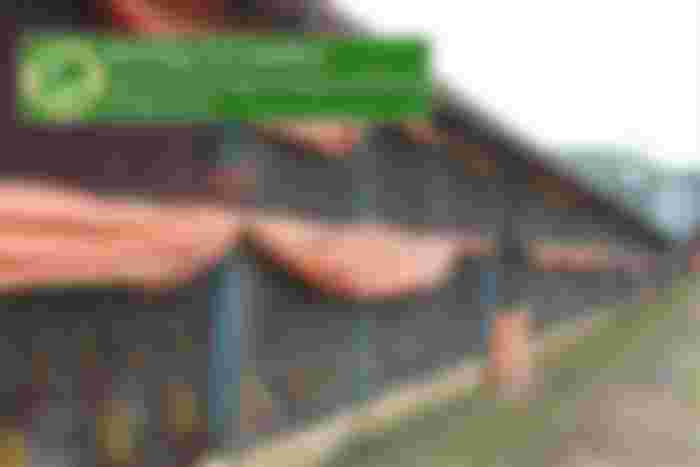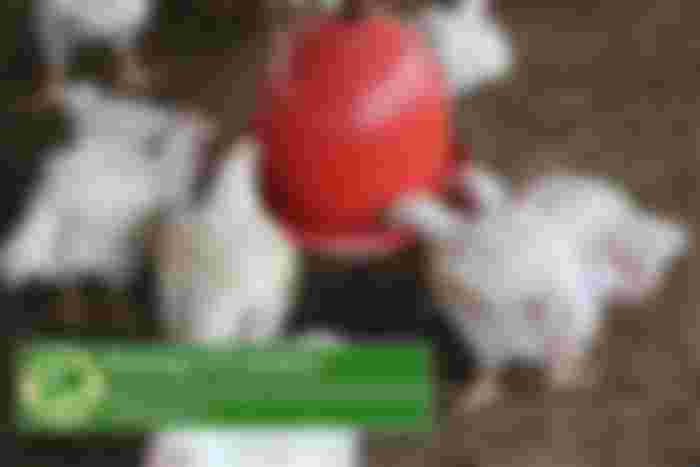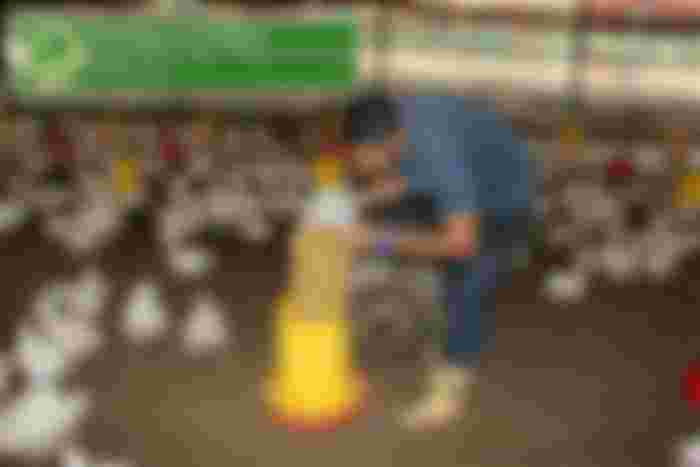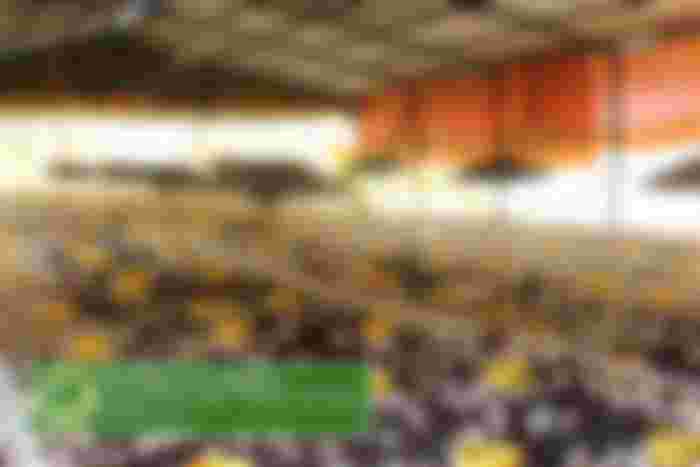
1. Location and size of the shed: The first thing to consider to establish a broiler shed is the direction of the wind, due to the strong smell emanating from the excreta of these animals, as well as the ease with which can get sick because of various virosis.

Also the height of the house plays a fundamental role at this point, it is recommended that the shed be 3.5 m high; This will allow good oxygenation inside the house and help us to more quickly ventilate the smell of chicken feces.

Regarding the dimensions of the shed, different criteria can be taken depending on the space, the economic resources and the quantity of materials availables.
If this activity is going to be practiced extensively, the sheds can be 12 m wide by 100 m long, that is, each shed would have an area of 1,200 m2 in which about 10,000 or 12,000 chickens can be located depending on the weather; for this we can calculate that in a temperate climate 10 chickens per square meter can be located, and in warm weather 8 chickens per square meter can be located.

When establishing the shed, the distance between the columns of the same must also be taken into account (3m distance between each column is recommended), which will help to support the structure and locate the safety mesh that will constitute the walls of the shed, keeping the chickens inside it and preventing the entry of other animals that could stress, contaminate or prey on our chickens.

The mesh should be used as a wall because this will also allow the passage of natural air to the shed, which will benefit aeration, oxygenation and help regulate the temperature of the chickens from 21 days of age.
2. Elements that the shed must have: Let's start with the basics, without water or food there is no biological life; so that every shed must have enough feeders and drinkers for the large number of birds that will live in it, this is an investment that the poultry farmer should only make once in each shed, and will only buy new feeders and drinkers to replace the that are damaged.


We will also need where to store the water and food of the chickens, so every shed must have at least one water tank and a silo. The shed must also have curtains that are used to block strong air currents and protect chickens from very low temperatures. These curtains are used in the first weeks of life of the chicks, in which they require heat and low temperatures are harmful.
After 21 days of age, when chickens grow and gain weight, these curtains are usually kept open to allow air to pass to the shed and prevent deaths from heart attacks, which can be caused by high temperatures inside the shed.

Regarding the silo, it should be noted that today there are automated systems that take food from the silo to the feeders located inside the shed. However, if this system is not available in the production unit, it will be necessary to manually empty the food contained in the silo and fill the feeders in the shed one by one.


Apart from what has already been mentioned, there must be two elements in the shed that cannot be missing; Heaters and Fans, each of these elements is used at a specific time during chicken development. The Heaters are used in the first 8 days of life of the chicks and give them the heat that their mother, the chicken, would give them in natural conditions. These Heaters can run on gas or electricity.

For the regulation of the temperature inside the shed we must take into account that the temperature of the chick during its first week of life is from 26 ° C to 28 ° C.

On the other hand the fans are used from the 21 days of age of the chickens, since at this moment they begin to give them Finisher Feed (food to guarantee fast fattening) and begin to increase an average of 60 g of weight daily.
At this stage it is necessary to avoid high temperatures to prevent heart attacks, so the fans keep running throughout the day and are only turned off at night if the weather turns cold, likewise the fans can be turned off on rainy or very cold days.

Now let's get to know the stages of chicken farming and agronomic management that we must apply in each of these to achieve a successful production:
3. First Reception (from birth to 7 days of age): At this stage the chicks are received inside the shed, which are barely a few hours old. As we mentioned earlier the temperature of the chicks the first week of life should be maintained between 26 ° C and 28 ° C, the shed curtains are kept down to avoid strong air currents, the heaters will be operated during the night and Cold days throughout this stage.

If the chicks are very hot (when this happens they are seen gasping) a small space can be opened between the curtains so that a small amount of air enters the shed and refreshes the chicks. We must also ensure that the chick identifies the feeders and drinkers, for this we can introduce a group of additional feeders between each of the lines of feeders and drinkers.

Additionally so that the chick knows where it can get water, we can touch the drinker so that they release water, seeing this the chick will be curious to go to the drinker and peck it to drink water.
Another technique that is widely applied by poultry producers is to walk along the banks of the shed so that the chicks are grouped between the feeders and drinkers, so that in this way they are encouraged to eat and drink water.

The food given to them at this stage is known as Starter Feed and is a powdered food that is used to familiarize the chicks with this type of concentrated food. Food and water should be offered to the chicken throughout the day at all stages, at no time can food or water be lacking in chickens that are raised for fattening.
It is also worth mentioning that chicken is very delicate and easy to stress, which is why poultry producers establish specific schedules for working in shed. These schedules are included in the first hours of the morning and the last hours of the afternoon, since they are the coolest hours and where the body temperature of the chicken is lower.
In the hours of noon and early hours of the afternoon you should not enter the shed, since they are usually the hottest hours of the day and therefore the body temperature of the chickens will be higher; what added to the stress caused by our presence in the shed, could cause a heart attack.
4. Second reception (from 7 to 14 days old): At this stage the heaters are no longer used, however if the weather is very cold they can be kept in operation until the chicks are 10 days old. The food changes from Starter Feed to Grower Feed, which is a semi-granulated food.
Also at this stage the first vaccines are applied to the chicks, which is done at 7 days of age, and they are also given more space in the shed. It is advised to keep the shed curtains down and only open small spaces between them to refresh the shed. At this stage it is still essential to keep the heat (up to 28 ° C) inside the shed.

5. Third reception (from 14 to 21 days of age): In this stage the chicks are given more space inside the shed and the vaccination booster is applied at 17 days of age. They are still supplied with the Grower Feed and the curtains are kept down, they can be opened as the chicks grow.
6. Fattening (from 21 to 42 days of age): By this point the chickens must be distributed throughout the shed and the Grower Feed is changed to the Finisher Feed; which is granulated and will guarantee weight gain in the chickens.
From this stage the chicken will begin to grow and its body temperature will increase, it will also be more thirsty and water consumption will increase significantly inside the house, so it is advisable to keep the tank (which will supply water to the chickens constantly) in its maximum capacity.

The fans keep running throughout the day and during nights that are very hot. At this stage the chicken should gain 60 g daily, and for this to happen it is important to ensure that there are no factors that can stress the chicken.
To do this we must avoid noises that are strange to the place where the shed is located, such as noises of machinery, music, loud barking of dogs, etc. It is also advisable to repair fans that make noises that may disturb the chickens.

As the fattening phase passes and our chickens gain weight, they will also be more susceptible to heart attack, this due to the overweight they gain in fattening and the large amount of heat that their bodies will generate as they grow and gain weight; so in This stage must be taken very seriously to keep the chicken in a calm and stress-free environment.
It is also good to remember that in regions of tropical climate, or in hot seasons in regions of stationary climate; It is not convenient to enter the sheds between 10:00 a.m. and 4:00 p.m. because in these hottest hours we increase the risk of stressing chickens and causing a heart attack.

Finally, after 42 days, the chickens are removed from the shed to take them to the slaughterhouse, it should be noted that this work stresses the chickens a lot, and therefore it is done late at night or in the early morning, before dawn.



















